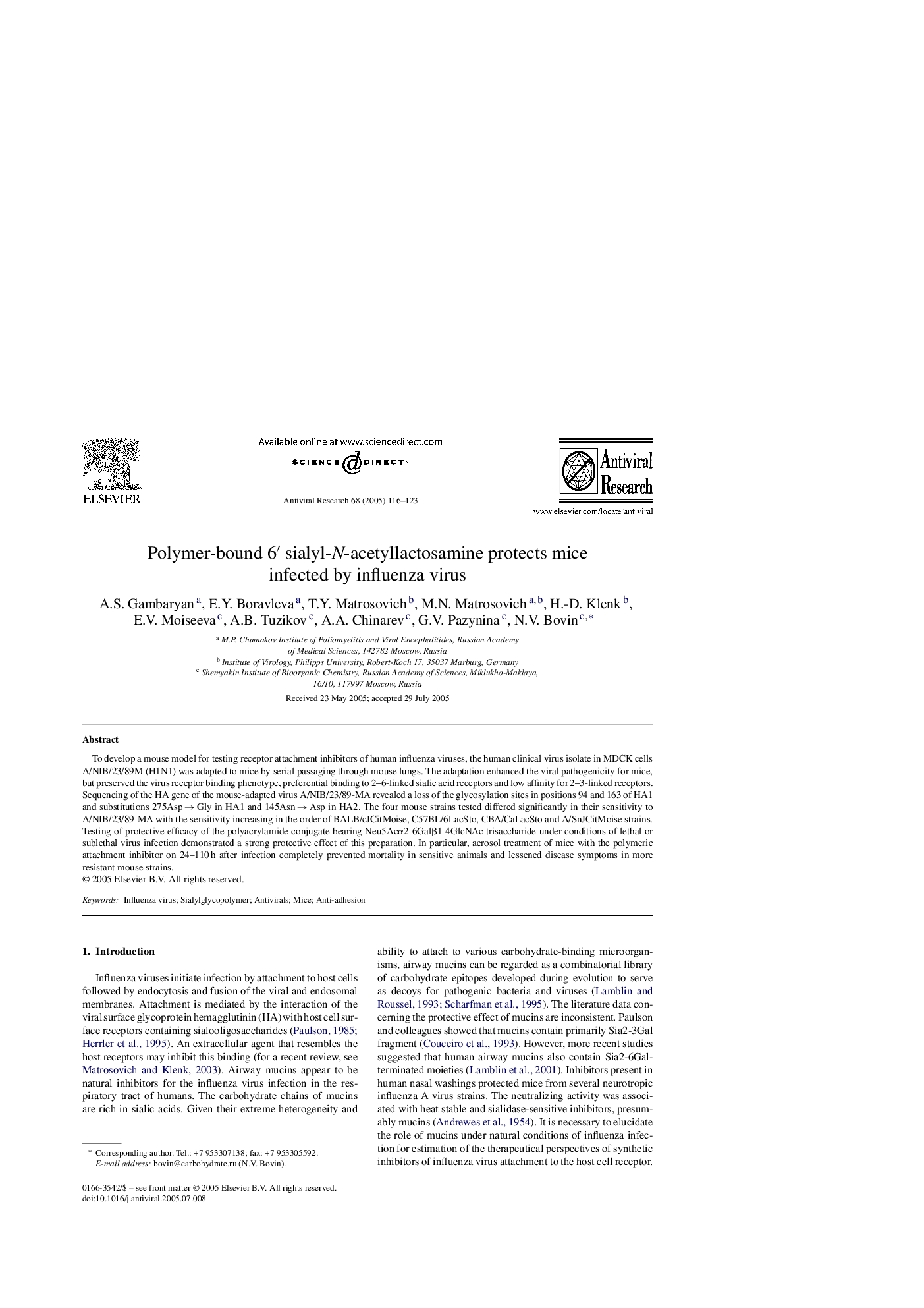| Article ID | Journal | Published Year | Pages | File Type |
|---|---|---|---|---|
| 9000862 | Antiviral Research | 2005 | 8 Pages |
Abstract
To develop a mouse model for testing receptor attachment inhibitors of human influenza viruses, the human clinical virus isolate in MDCK cells A/NIB/23/89M (H1N1) was adapted to mice by serial passaging through mouse lungs. The adaptation enhanced the viral pathogenicity for mice, but preserved the virus receptor binding phenotype, preferential binding to 2-6-linked sialic acid receptors and low affinity for 2-3-linked receptors. Sequencing of the HA gene of the mouse-adapted virus A/NIB/23/89-MA revealed a loss of the glycosylation sites in positions 94 and 163 of HA1 and substitutions 275Asp â Gly in HA1 and 145Asn â Asp in HA2. The four mouse strains tested differed significantly in their sensitivity to A/NIB/23/89-MA with the sensitivity increasing in the order of BALB/cJCitMoise, C57BL/6LacSto, CBA/CaLacSto and A/SnJCitMoise strains. Testing of protective efficacy of the polyacrylamide conjugate bearing Neu5Acα2-6Galβ1-4GlcNAc trisaccharide under conditions of lethal or sublethal virus infection demonstrated a strong protective effect of this preparation. In particular, aerosol treatment of mice with the polymeric attachment inhibitor on 24-110 h after infection completely prevented mortality in sensitive animals and lessened disease symptoms in more resistant mouse strains.
Related Topics
Life Sciences
Immunology and Microbiology
Virology
Authors
A.S. Gambaryan, E.Y. Boravleva, T.Y. Matrosovich, M.N. Matrosovich, H.-D. Klenk, E.V. Moiseeva, A.B. Tuzikov, A.A. Chinarev, G.V. Pazynina, N.V. Bovin,
